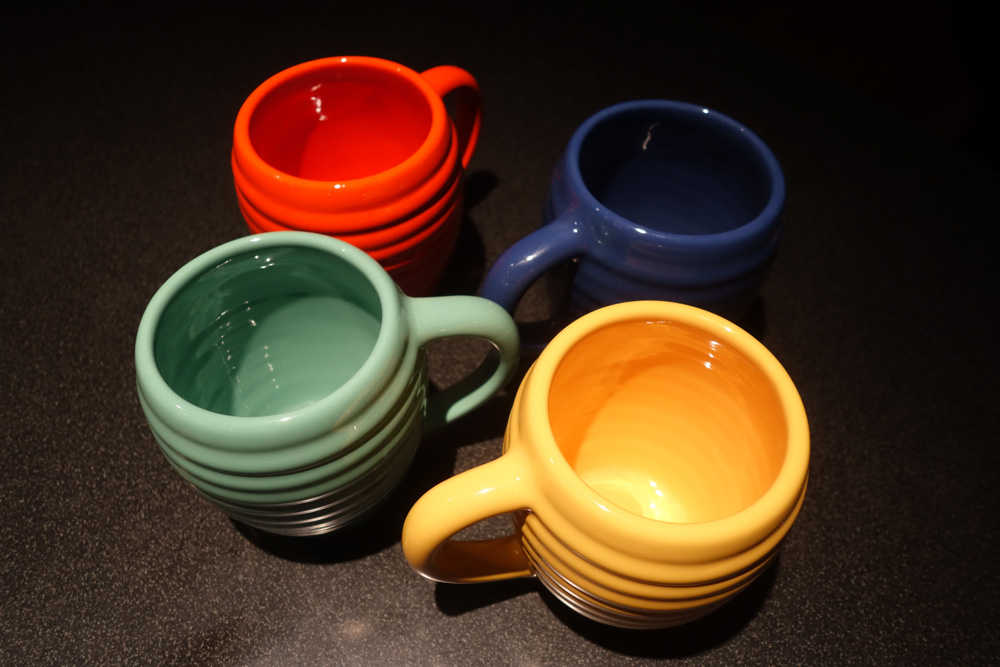
Peggi’s sister sent us four coffee cups from the Bauer Pottery Company in LA. They look like California and have livened up our mornings.
Duane sent us up a copy of “Leon of Juda,” Robert Frank’s newest book of photos, published by Steidl. I mention the publisher because the book is beautiful. The photos are as well but that goes without saying. I’ve looked at the book (it is without text) everyday since it arrived and it still seems mysterious and fresh.
And a paperback also arrived from Louise in time for the holidays, one based on a 1972 BBC series, “Ways of Seeing” by John Berger. Parts of it are so thought provoking I will never forget what I read.
Berger starts Chapter 3 with a passage from Genesis. Catholics weren’t so big on the bible when I went to school so I was familiar with the story but still not ready to read it.
“And when the woman saw that the tree was good for food, and that it was a delight to the eyes, and that the tree was to be desired to make one wise, she took of the fruit thereof and did eat; and she gave also unto her husband with her, and he did eat.
And the eyes of them both were opened, and they knew that they were naked; and they sewed fig-leaves together and made themselves aprons …. And the Lord God called unto the man and said unto him, ‘Where are thou?’ And he said, ‘I heard thy voice in the garden, and I was afraid, because I was naked; and I hid myself ….
Unto the woman God said, ‘I will greatly multiply thy sorrow and thy conception; in sorrow thou shalt bring forth children; and thy desire shall be to thy husband and he shall rule over thee.'”
With these words he makes the case that all of European culture was ripe for the #MeToo movement. With rare exceptions, paintings of female nudes exist for the delight of men. “You painted a naked woman because you enjoyed looking at her, you put a mirror in her hand and you called the painting Vanity, thus morally condemning the woman whose nakednsss you had depicted for your own pleasure. The real function of the mirror was otherwise. It was to make the woman connive in treating herself as, first and foremost, a sight.”
And he notes, “other non-European traditions – in Indian art, Persian art, African art, Pre-Columbian art – nakedness is never supine in this way. And if, in these traditions, the theme of a work is sexual attraction, it is likely to show active sexual love as between two people, the woman as active as the man, the actions of each absorbing the other”
He finishes the chapter with a challenge. “Choose from this book an image of a traditional nude. Transform the woman into a man. Either in your mind’s eye or by drawing on the reproduction. Then notice the violence which that transformation does. Not to the image, but to the assumptions of a likely viewer.”
Leave a comment